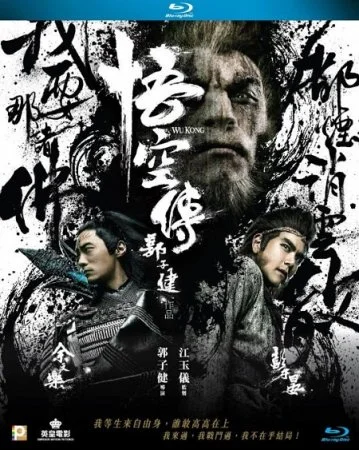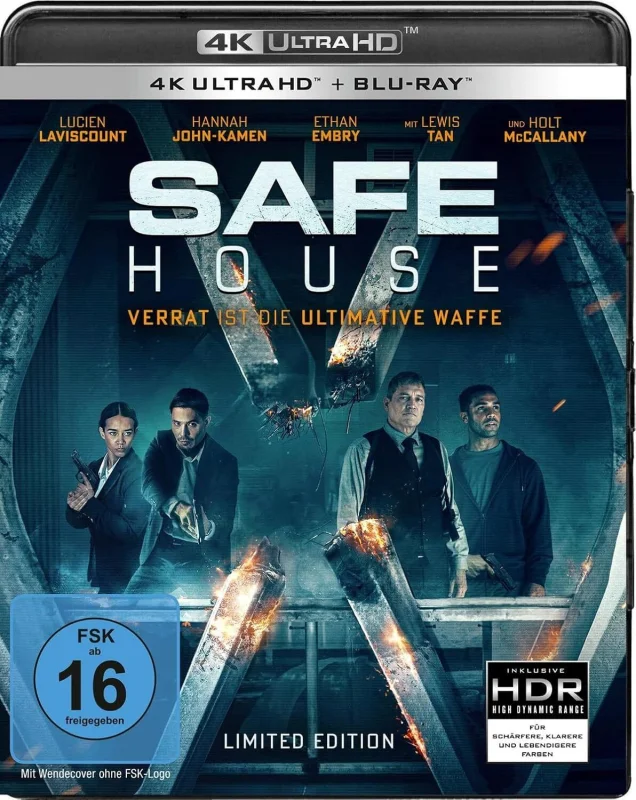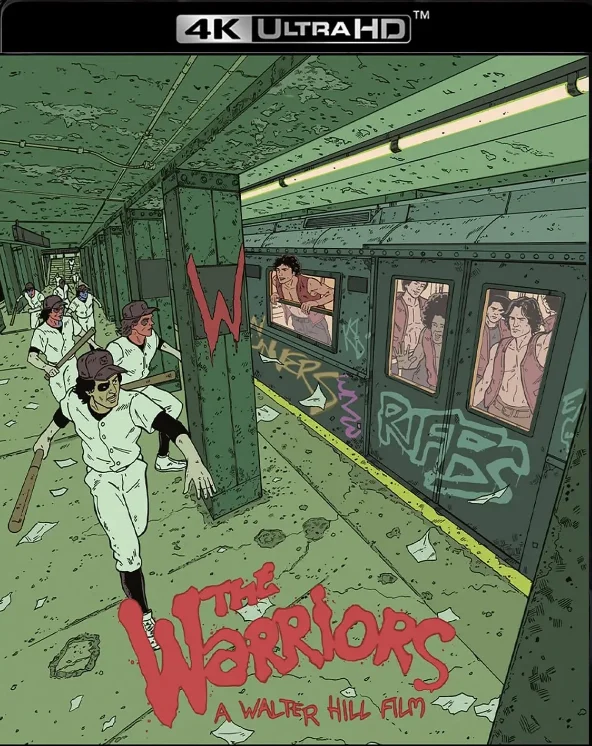Featured Movies
The Convert 4K 2023 Ultra HD 2160p
Сountry: UK, Australia, New Zealand
Genre: Drama
Cast: Guy Pearce, Tioreore Ngatai-Melbourne, Antonio Te Maioha, Jacqueline McKenzie, Te Kohe Tuhaka, Lawrence Makoare, Dean O'Gorman, Jared Turner, Will Wallace, Kelly Vivian, Marris Collins, Duane Evans Jr., Andrew G Hill, Renee Lyons, Leonard Mathews, Madeleine McCarthy, Tania Nolan, Peata Panoho
1830s. An unordained preacher finds himself in the midst of a bloody Maori tribal confrontation.
User Review
In 1994, New Zealand director Lee Tamahori's Once Were Warriors was one of the winners of the Venice Film Festival. After the success of the crime drama, which depicts the contemporary life of the Maori, the indigenous population of New Zealand, the doors to Hollywood opened for the director. In the early noughties Tamahori managed to remove one of the parts of the “Bond” - “Die, but not now”, “Three X 2: The New Level” and even put the third episode of the second season of the cult “The Sopranos”. And now, decades later, Lee Tamahori is returning to his roots, once again telling a Maori story.
1830. Tasman Sea. A British merchant ship is on course for the Maori islands. The hold is full of muskets and gunpowder, but the goal of the British is not a brutal invasion, but a full-fledged barter. Lumber and food in exchange for firearms. How the Maoris will handle guns is of little interest to the Crown. However, if suddenly the warring tribes shoot each other, it would be a clear plus for Britain's colonial policy.
Among the “sellers of death” on board is Munro (Guy Pearce), a former soldier, now a priest, seeking redemption for his sins. The chance will present itself rather quickly: barely coming ashore, he witnesses a brutal attack of a tribe just armed with firearms on another. Munro saves a young girl, Rangimai (Tiorere Ngatay-Melbourne), from execution by taking her with him to the British settlement of Epworth. An outside savior on a white horse (literally).
In Epworth, Munroe has been waiting. The church stands idle, and the house built for the priest is also empty. However, the man will not live alone, but with his rescued Rangimai, which will not like the local settlers, who treat Maori as savages. Observing such an inhuman attitude of the British to the Maori Munro will be convinced that the real savages do not live in the forests, but wear tailcoats, prefer tea with milk and faithfully serve the Crown. The traders, who have armed the Maori, add fuel to the fire by provoking the warring tribes to compete in marksmanship. Killing each other, the Maori do not notice that the real enemy is not a neighboring tribe, but colonizers arriving from across the horizon. The world, torn by internal strife, is unprepared for the new time.
In any even the most detailed retelling of the movie, “At the End of the Earth” may seem like a distant New Zealand relative of Mel Gibson's “Apocalypse.” Only the Mayans have been replaced by the Maori, and the conquistadors by British colonizers. However, where Gibson clung to the viewer incessant chase and literally two-hour quest for survival in the wild jungle, there Lee Tamahori deliberately slowed down. He is interested not so much in the scenes of brutal battles (which, however, enough), but in the relationship between the Maori and the British. Where Gibson practically elevated the story of one of the Mayans to myth, Tamahori, on the contrary, deconstructs the trope of an outside savior who, as we know, did not save the indigenous population from the brutal colonizers.
There are two bloods in Tamohori himself. Father - Maori, mother - British, so the fate of the indigenous population of New Zealand for him has always been the most important leitmotif of creativity. We can assume that the character of Guy Pearce is the alter ego of the director himself, desperately trying to establish relations between the two nations. And while the movie's finale may reassure the viewer by hinting that a mutually beneficial alliance is possible, the reality is far more brutal.
After the Treaty of Waitangi was signed in 1840, New Zealand received a huge influx of European settlers. And if as of 1831 the number of Europeans amounted to a thousand people, by 1881 it had risen to half a million. The Maori were suddenly a minority in their own land and still are.
The consequences of the events of the XIX century are reflected in New Zealand cinema not only in Tamahori's filmography. In the aforementioned Once Were Warriors, the director told the story of Maori descendants now living in poverty and destitution. Another Maori descendants, Taika Waititi and Jemaine Clement, in their film “Real Ghouls” shows the life of vampires living in the shadows and forced to survive on occasional snacks. Isn't that the Maori? It turns out that it took two hundred years and thousands of dead in poverty for the Maori to be heard. And as different as Tamahori and Waititi's paintings of Clement may seem, there is a common tragedy at the heart of them.
Resolution: Native 4K (2160p)
HDR: HDR10
Aspect ratio: 2.39:1
Original aspect ratio: 2.39:1
#German: DTS-HD Master Audio 5.1
User Review
In 1994, New Zealand director Lee Tamahori's Once Were Warriors was one of the winners of the Venice Film Festival. After the success of the crime drama, which depicts the contemporary life of the Maori, the indigenous population of New Zealand, the doors to Hollywood opened for the director. In the early noughties Tamahori managed to remove one of the parts of the “Bond” - “Die, but not now”, “Three X 2: The New Level” and even put the third episode of the second season of the cult “The Sopranos”. And now, decades later, Lee Tamahori is returning to his roots, once again telling a Maori story.
1830. Tasman Sea. A British merchant ship is on course for the Maori islands. The hold is full of muskets and gunpowder, but the goal of the British is not a brutal invasion, but a full-fledged barter. Lumber and food in exchange for firearms. How the Maoris will handle guns is of little interest to the Crown. However, if suddenly the warring tribes shoot each other, it would be a clear plus for Britain's colonial policy.
Among the “sellers of death” on board is Munro (Guy Pearce), a former soldier, now a priest, seeking redemption for his sins. The chance will present itself rather quickly: barely coming ashore, he witnesses a brutal attack of a tribe just armed with firearms on another. Munro saves a young girl, Rangimai (Tiorere Ngatay-Melbourne), from execution by taking her with him to the British settlement of Epworth. An outside savior on a white horse (literally).
In Epworth, Munroe has been waiting. The church stands idle, and the house built for the priest is also empty. However, the man will not live alone, but with his rescued Rangimai, which will not like the local settlers, who treat Maori as savages. Observing such an inhuman attitude of the British to the Maori Munro will be convinced that the real savages do not live in the forests, but wear tailcoats, prefer tea with milk and faithfully serve the Crown. The traders, who have armed the Maori, add fuel to the fire by provoking the warring tribes to compete in marksmanship. Killing each other, the Maori do not notice that the real enemy is not a neighboring tribe, but colonizers arriving from across the horizon. The world, torn by internal strife, is unprepared for the new time.
In any even the most detailed retelling of the movie, “At the End of the Earth” may seem like a distant New Zealand relative of Mel Gibson's “Apocalypse.” Only the Mayans have been replaced by the Maori, and the conquistadors by British colonizers. However, where Gibson clung to the viewer incessant chase and literally two-hour quest for survival in the wild jungle, there Lee Tamahori deliberately slowed down. He is interested not so much in the scenes of brutal battles (which, however, enough), but in the relationship between the Maori and the British. Where Gibson practically elevated the story of one of the Mayans to myth, Tamahori, on the contrary, deconstructs the trope of an outside savior who, as we know, did not save the indigenous population from the brutal colonizers.
There are two bloods in Tamohori himself. Father - Maori, mother - British, so the fate of the indigenous population of New Zealand for him has always been the most important leitmotif of creativity. We can assume that the character of Guy Pearce is the alter ego of the director himself, desperately trying to establish relations between the two nations. And while the movie's finale may reassure the viewer by hinting that a mutually beneficial alliance is possible, the reality is far more brutal.
After the Treaty of Waitangi was signed in 1840, New Zealand received a huge influx of European settlers. And if as of 1831 the number of Europeans amounted to a thousand people, by 1881 it had risen to half a million. The Maori were suddenly a minority in their own land and still are.
The consequences of the events of the XIX century are reflected in New Zealand cinema not only in Tamahori's filmography. In the aforementioned Once Were Warriors, the director told the story of Maori descendants now living in poverty and destitution. Another Maori descendants, Taika Waititi and Jemaine Clement, in their film “Real Ghouls” shows the life of vampires living in the shadows and forced to survive on occasional snacks. Isn't that the Maori? It turns out that it took two hundred years and thousands of dead in poverty for the Maori to be heard. And as different as Tamahori and Waititi's paintings of Clement may seem, there is a common tragedy at the heart of them.
Info Video
Codec: HEVC / H.265 (56.1 Mb/s)Resolution: Native 4K (2160p)
HDR: HDR10
Aspect ratio: 2.39:1
Original aspect ratio: 2.39:1
Info Audio
#English: DTS-HD Master Audio 5.1#German: DTS-HD Master Audio 5.1
Info Subtitles
English SDH, Arabic, Danish, Dutch, Finnish, German, Norwegian, Swedish.File size: 50.10 GB

You have purchased premium on MoonDL or TakeFile. You will automatically be activated an additional 512 GB of traffic every 48 hours or up to 128 GB every 48 hours (Premium Moon).
Watch trailer of the movie The Convert 4K 2023 Ultra HD 2160p
Maybe You like:
Add comments






















 Like
Like Don't Like
Don't Like



